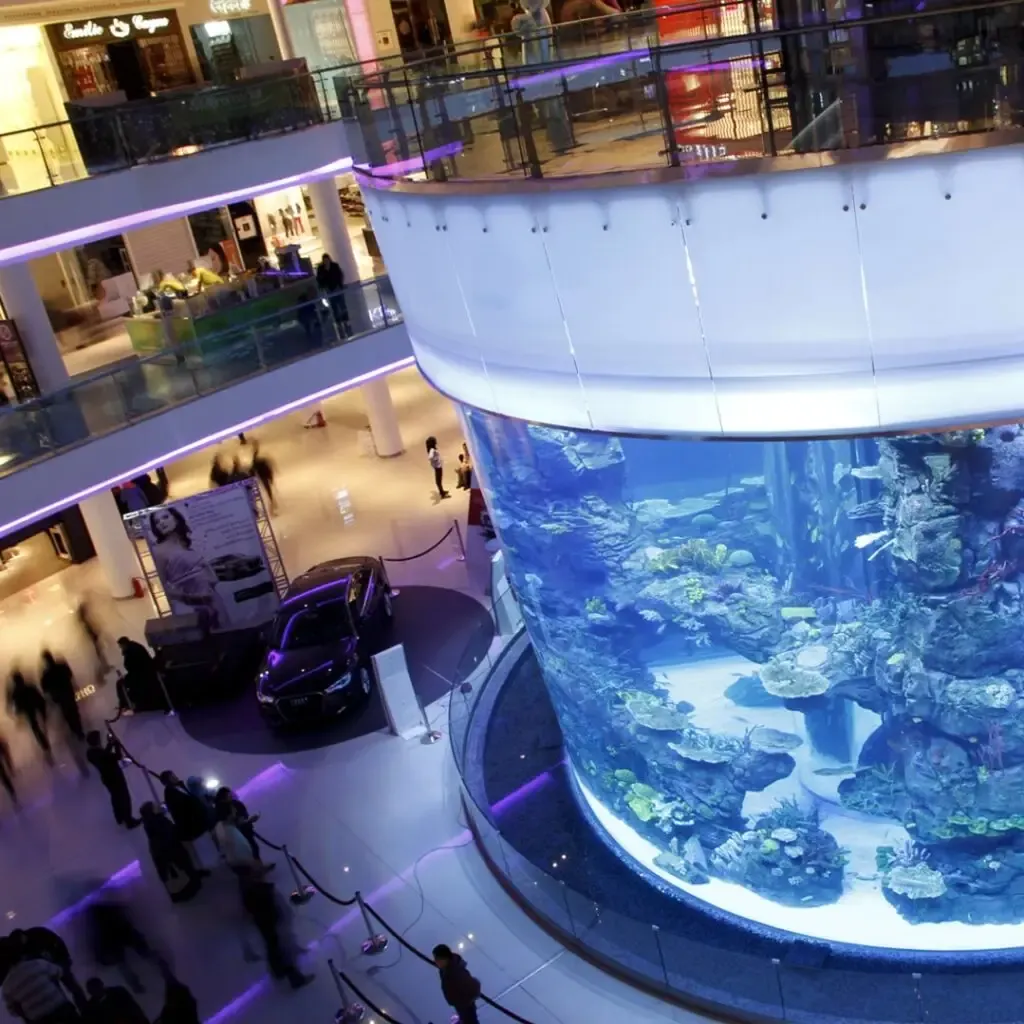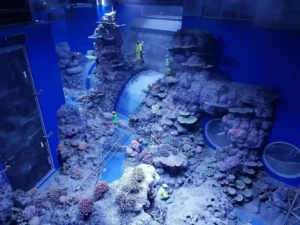Blogs
Key Considerations for Designing LSS (Life Support Systems) in Aquariums
Life Support Systems (LSS) are the backbone of any successful aquarium, ensuring the health and longevity of marine life. Designing a robust LSS requires a perfect blend of engineering precision, technical know-how, and a deep understanding of aquatic ecosystems. Whether you are planning a small-scale marine aquarium or a public aquatic exhibit, a well-thought-out LSS is critical for maintaining water quality, optimizing filtration, and supporting sustainable habitats.
1. Understanding the Role of LSS in Aquariums
An LSS is a complex assembly of systems designed to mimic natural aquatic environments. It ensures optimal conditions for marine life by regulating critical parameters such as:
- Water Quality: Maintaining proper pH, salinity, and oxygen levels.
- Filtration: Removing physical, chemical, and biological impurities from the water.
- Temperature Regulation: Controlling water temperature for species-specific needs.
- Nutrient Balance: Managing waste byproducts and promoting healthy microbiomes.

2. Key Components of an Aquarium LSS
Filtration Systems
- Mechanical Filtration: Removes debris and particulate matter using devices like sand filters and foam fractionators.
- Biological Filtration: Harnesses beneficial bacteria to convert harmful substances like ammonia into less toxic forms, such as nitrates.
- Chemical Filtration: Uses activated carbon or resins to eliminate impurities, odors, and discolorations.
Water Pumps and Circulation
- Essential for maintaining steady water flow, pumps ensure oxygen distribution and prevent stagnant areas.
- High-efficiency pumps reduce energy consumption and are a hallmark of Sustainable LSS designs.
Oxygenation and Aeration
- Air stones, diffusers, and venturi systems supply adequate oxygen to marine organisms.
- Advanced solutions like Aquarium Design Experts incorporate automated oxygen monitoring.
Temperature Control
- Heating systems maintain consistent temperatures, while chillers prevent overheating in warm climates.
- Automation technologies integrated by Advanced Aquarium Technologies provide precise temperature regulation.
UV Sterilization
- UV sterilizers kill harmful pathogens and algae, ensuring a clean, disease-free environment.
3. Considerations for Designing an Effective LSS
Tank Size and Design
- The size and shape of the aquarium significantly influence the LSS design. For example:
- Cylinder Aquariums require uniform flow patterns to prevent dead zones.
- Large tanks benefit from zoned filtration systems for efficient water processing.
Type of Habitat
- Tailor the LSS to the specific needs of the aquatic environment:
- Marine Aquariums demand advanced protein skimmers and salinity control.
- Planted Tanks require CO2 injection systems for optimal plant growth.
- Public Aquarium Designs often incorporate multi-stage filtration to manage high bioloads.
Species-Specific Requirements
- Research the needs of your marine inhabitants, such as oxygen levels for active species or low light intensity for deep-water organisms.
Sustainability and Energy Efficiency
- Modern LSS designs focus on energy-efficient pumps, LED lighting, and waste-recycling systems.
- Sustainable LSS reduces operational costs and minimizes environmental impact.

4. Technical Aspects in LSS Design
Engineering Calculations
- Calculate turnover rates to determine how often the tank water should be cycled through the filtration system.
- Use load-bearing data for structural components like Acrylic Panels to ensure safety under pressure.
Automation and Monitoring
- Advanced LSS solutions include real-time monitoring systems that track water quality parameters like pH, salinity, and oxygen levels.
- Integration with IoT devices allows remote management, a feature commonly provided by Aquarium Design India specialists.
Backup and Redundancy
- Include backup power systems and redundant pumps to safeguard against equipment failure.
- Emergency oxygen supply systems are critical for maintaining life in case of prolonged outages.
5. Steps to Plan and Implement an LSS
Step 1: Concept to Installation
- Begin with detailed planning that includes tank dimensions, species selection, and habitat replication.
- Partner with an Aquarium Design Group to develop a blueprint that aligns with your goals.
Step 2: Material Selection
- Use high-quality materials like Acrylic Sheets for Aquariums for durable and clear tank construction.
- Ensure compatibility between tank materials and LSS components.
Step 3: Customization
- Work with Custom Aquarium Solutions to tailor the LSS to unique design and engineering challenges.
Step 4: Testing and Optimization
- Test the LSS extensively before introducing marine life. Fine-tune filtration, oxygenation, and circulation systems for optimal performance.
Step 5: Maintenance Plan
- Regular maintenance, including filter cleaning and water testing, is crucial for long-term functionality.
- Engage experts in Aquarium Management for professional upkeep.

How Peach Prime Consultancy Can Help
At Peach Prime Consultancy, we specialize in designing sustainable LSS for aquariums. We specialize in budget planning and cost estimation to ensure your project stays within financial expectations. By providing a detailed breakdown of the total project cost. Our services include tailored Aquarium Design Plans and collaboration with top-tier manufacturers for Acrylic Fabrication and advanced LSS components. Transform your aquarium with our expert design solutions. We serve cities like Varanasi, Amritsar, Haridwar, Rishikesh, Tirupati, Bodh Gaya, Puri, Ajmer, Shirdi, Dwarka, Mathura, Vrindavan, Kedarnath, Badrinath, Rameswaram, Kanchipuram, Mecca Masjid, Sanchi, Kailash Mansarovar, Somnath, Srirangam, Vaishno Devi, Golden Temple, Kashi Vishwanath, Jama Masjid, Khajuraho, Puri Jagannath Temple, Shankaracharya Temple, Pushkar, Tirumala, Palani, Kumbh Mela, Nabadwip, Banaras Hindu University, Gurudwara Bangla Sahib, Sabarimala, Tirthan Valley, Hampi, Patal Bhuvaneshwar, Shakti Peeths, Kamakhya Temple, Shri Siddhivinayak, Dakshineswar Kali Temple, Naina Devi Temple, Jwalamukhi Temple, Mahakaleshwar Temple, Somnath Temple, Tiruvannamalai, Omkareshwar, and Lingaraj Temple.











